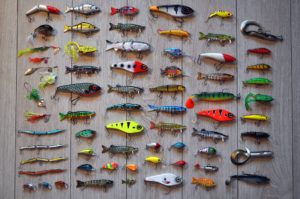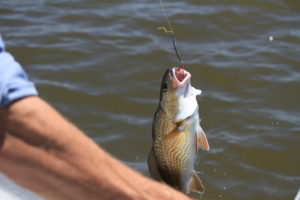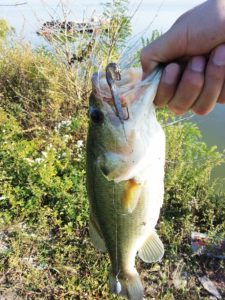Ah, the angler’s dilemma of choosing your bait for fishing. Many a debate has been spurred by those seeking to find the best one to use for fishing.
On the left side, we have the natural bait. Its greatest strength is said to be its appeal as being alive and attracting all sorts of fish as a result.
On the right side, we have artificial bait. Its greatest strength is the amount of control it allows the angler to wield.
So, which is it? Which is the crowning bait among these two, and which one should you use?
A quick rundown on bait
Bait is one of the most important parts of your rod. Without it, fish will continue swimming by without a care in the world, no matter how many times you toss your line in.
But why bait?
Fish, being alive and everything, want to continue being alive, and one of the ways that they do so is by eating. Utilizing bait prompts fish and tells them that there is food just waiting for them, but little do they know that there is a hook at the end of it.
What should be an easy meal for them to sustain themselves becomes a reversal, where they become a potential meal for an angler instead.
Natural Bait
The good old classic, natural bait relies on using small creatures that are alive or were previously alive to entice a fish. Some examples of natural bait include minnows, crayfish, and crabs.
Not all bait works equally, however. For instance, bait like crickets, crayfish, and minnows work best as freshwater bait. Meanwhile, saltwater fish are attracted to crab, shrimp, eels, and strips of squids. It all depends on the environment and the diet of the fish found within.
Pros:
-Very cheap and hassle-free to obtain for the most part. For example, you can easily find lots of earthworms wriggling around by simply turning nearby damp rocks in shaded areas, or by shoveling around said dirt.
-Extremely effective in fooling fish, as most fish cannot sense the danger, especially since the bait is actually real.
-Natural bait appeals to practically all the fish in a given area. You are unlikely to walk away without some kind of catch if you use natural bait.
-Less effort needed to attract fish as the bait does most of the work for you. The color, shape, and odor are already right since it comes from the live creature you are using, and enticing movement is usually done when the bait you are using is still alive.
-Fish are more likely to hook themselves hard when they bite down, thanks to the bait being hooked in, giving them less chance to get away.
Cons:
-Live bait requires it to stay alive to attract fish, so casting more gently is important. It also ensures that the bait does not accidentally fall off.
-If you are an angler that actually cares about the type of fish that you hook, then natural bait being an attractor to any kind of fish may work against you, as it might instead hook a more common, smaller, or just outright undesirable fish.
-Keeping live bait may turn into an additional task especially if unused, as they will need sustenance and a proper environment to be kept alive. If not alive, then refrigeration will be needed to ensure freshness of the bait.
-Live bait can get quite smelly, which may distract you while fishing. The smell may also travel to your clothes too…
Artificial Bait
True to the title, artificial bait does not use small creatures that are alive, but rather a mimicry of them made of wood, metal, plastic, or other materials.
There are many types of artificial bait of diverse types, such as jigs, flies, and poppers, and many more. When used correctly, many fish will see them as their natural food (like minnows and mayflies) and go for the kill.
Pros:
-For the anglers that like moving, using artificial bait makes for a more active experience, as you will constantly be in motion. This also helps in covering more water.
-Artificial baits are more specific on the fish that they catch (such as predatorial fish) depending on your bait of choice, lessening the chance of unwanted captures.
-Artificial baits can feel fulfilling to use, especially after a hard catch.
-If you are an angler that releases the fish that you catch, artificial bait usually hooks fish near the mouth area, making for a safer catch and release for you and the fish.
Cons:
-Using artificial bait requires a higher skill threshold compared to using natural bait.
-Unlike natural bait, artificial bait can get quite pricey, especially if you are looking for quality ones.
-To use artificial bait efficiently, you will have to be in constant motion to do things like casting and retrieving. This might be a problem for an angler that tires easily.
-Fish are not as likely to pursue artificial bait.
-Artificial bait can easily get snagged in undesirable places, such as rocks, logs, or underwater plants.
Which is better?
And the winner of the bait-boxing contest is…
… No one, actually.
If you read the article, you can see that both types of bait are designed for distinctive styles of fishing. If you are someone who only wants something to bring home while relaxing, using live bait is great. If you are someone who wants a challenge by aiming for a specific fish, using artificial bait is for you.
Neither side is superior to the other. Rather, the best thing that any seasoned angler would do is train themselves on the usage of both types of bait!



